BIOBITUARY
The ways to keep memories of life
In 2017, my friend’s death changed my perspective on life. He was only 19 years-old. His sister asked me to help her organize his funeral and the last thing I could do for him was curate his photos into a film which displayed his life. I was looking through his photos on his laptop the night before the funeral and when touching his computer, all my memories of him came flooding back. It felt as if he was with me whilst I finished the film. After that moment, the only thing I had that connected me to him was the thin paper of his obituary; my memories of him were fading.
How should we record and remember people after death? In the West, there are obituaries to record these lives but in Taiwan, obituaries are more like formal invitations. There is a lack of connection to the memories of these people. My project the ‘Biological Obituary’ aims to experiment with different forms of obituaries which stores memories in biological objects.
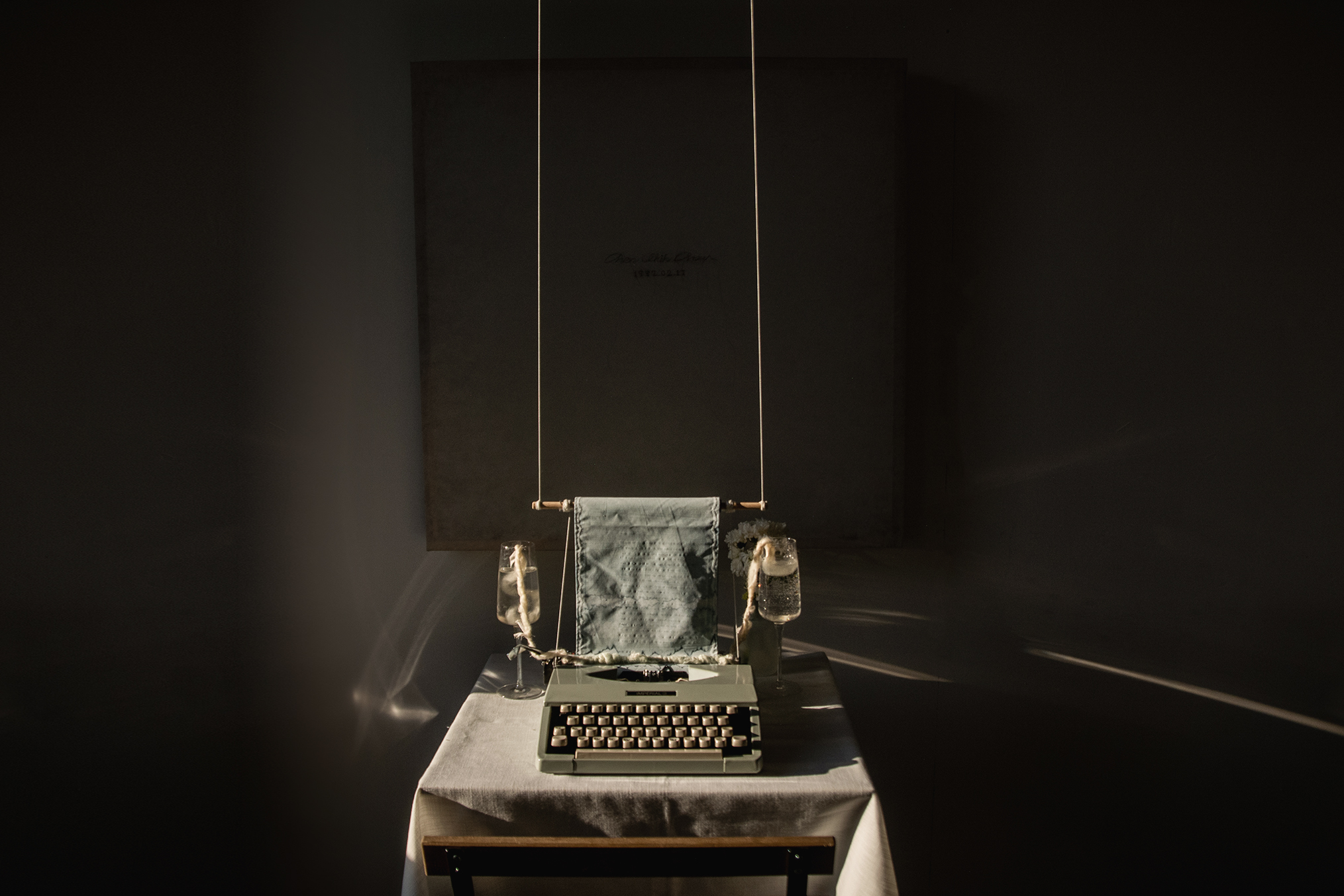



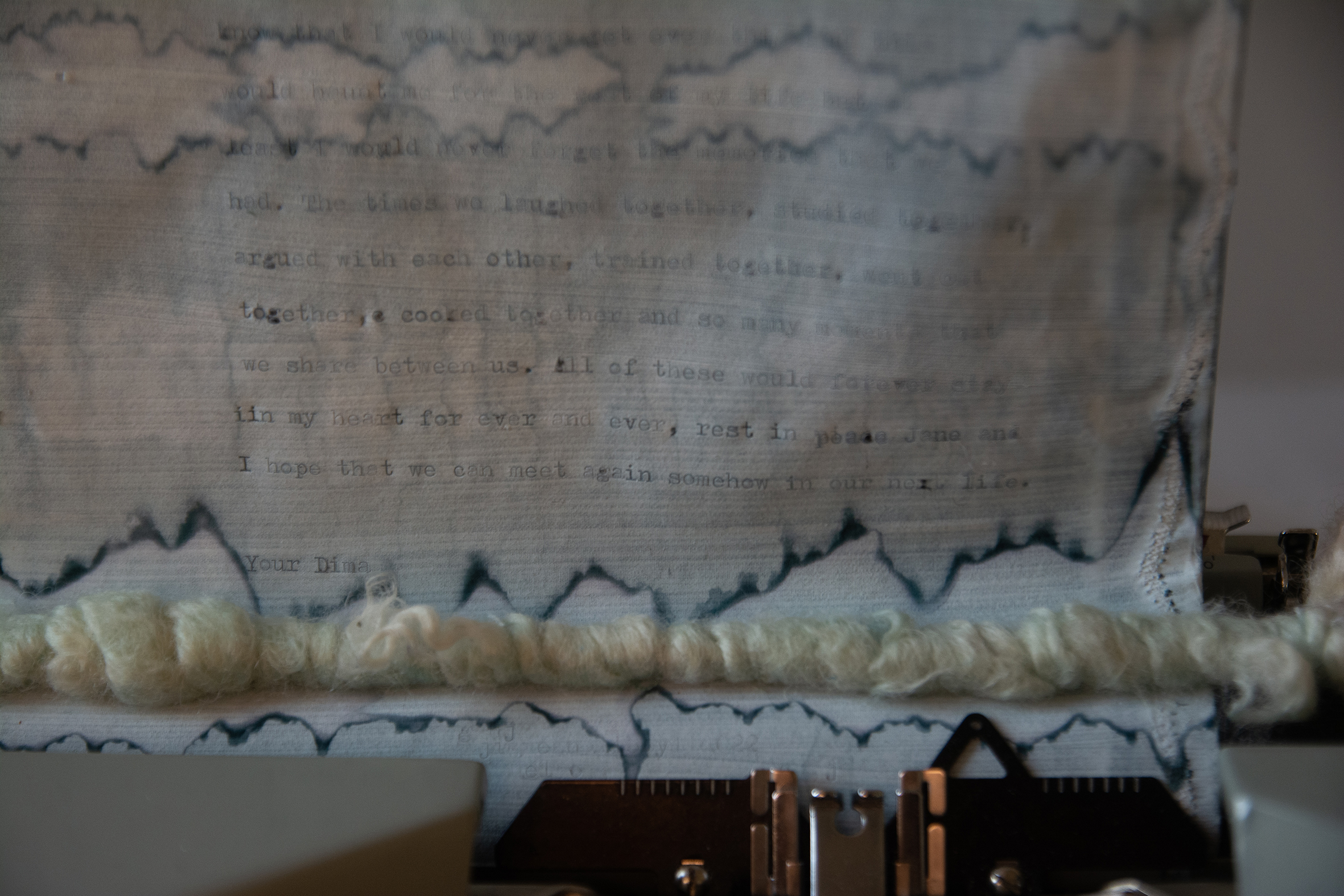

Definition of obituary in the Western and Taiwan
The definition of obituary is a report and notice of someone’s death especially in newspaper or news website. The elements of obituary in the Western and the Eastern are different. According to ‘Obit (2016)’, a documentary film about the obituary of a writer at The New York Times, obituaries should include achievements, personal information and death details around 40 to 800 words along with a portrait photo. The most important thing is to keep someone’s story true because ‘it is a once-only chance to make the dead live again’ (Obit, 2016). The editor of obituaries at The Guardian, Mr. Robert White, mentioned that ‘ the writers always want to say that the person who has died is important. We always want to show how they are interesting. Because we are doing it for readers. And so I think the best way to do is to tell the story of what the person did. And I always say to writers what the person did, don’t say the person was important, say what they did, tell the story of what they did. Because I think if you tell people in the newspaper that a person was important, they're not going to read it. You have to give people things that they can see in their heads. Things that they can imagine that they can visualize’.
However, unlike the concept of obituary in the West, traditional obituaries in Taiwan are similar to proof of death or invitation which notes someone’s death and the date of funeral. It indicates only personal death information, family members and the dates and times of family and private funeral ceremony around 100 words.
The evolution of obituary
Originally, obituaries were printed in local or national newspapers. However, in Taiwan, obituaries have been printed in formal papers as a funeral invitation card. In addition, the different colours of the paper indicate different ages of death. Pink and yellow mean celebration or happy ending to seniors who died over around 80 years old naturally while grey and sky blue means sad and down to young or adult who died accidentally or unexpectedly. In recent years, there has been an increase in the number of journalists and people who would like to launch obits on the internet which commemorate someone’s life and stories.
Mr. Robert White mentioned that ’there’s a big change with the arrival of the internet. The change is on the internet and the newspaper. Before the internet, the writer of the obituary had much more freedom. The writer could give judgements and make comment about the person. And the piece was much more shaped by the writer. They could write the pieces which would be printed in the newspaper, and that would be at last for one or two days. And then nobody would remember them. There was much more freedom for writers because readers only had one or two days to respond to them by writing a letter to the newspaper. So writers could say what they wanted. And it was okay. But now with the internet, you put the piece on the website, and immediately readers can respond either by comments under the pieces. Or on Twitter, they put the link to your piece. Yes. And then they say, well, it’s terrible. Sometimes they do. Yeah. It's not very often. Sometimes they do, but they can start arguing with the piece as soon as it appears on the website. They can also check the details, they can argue and they can say this is wrong’.

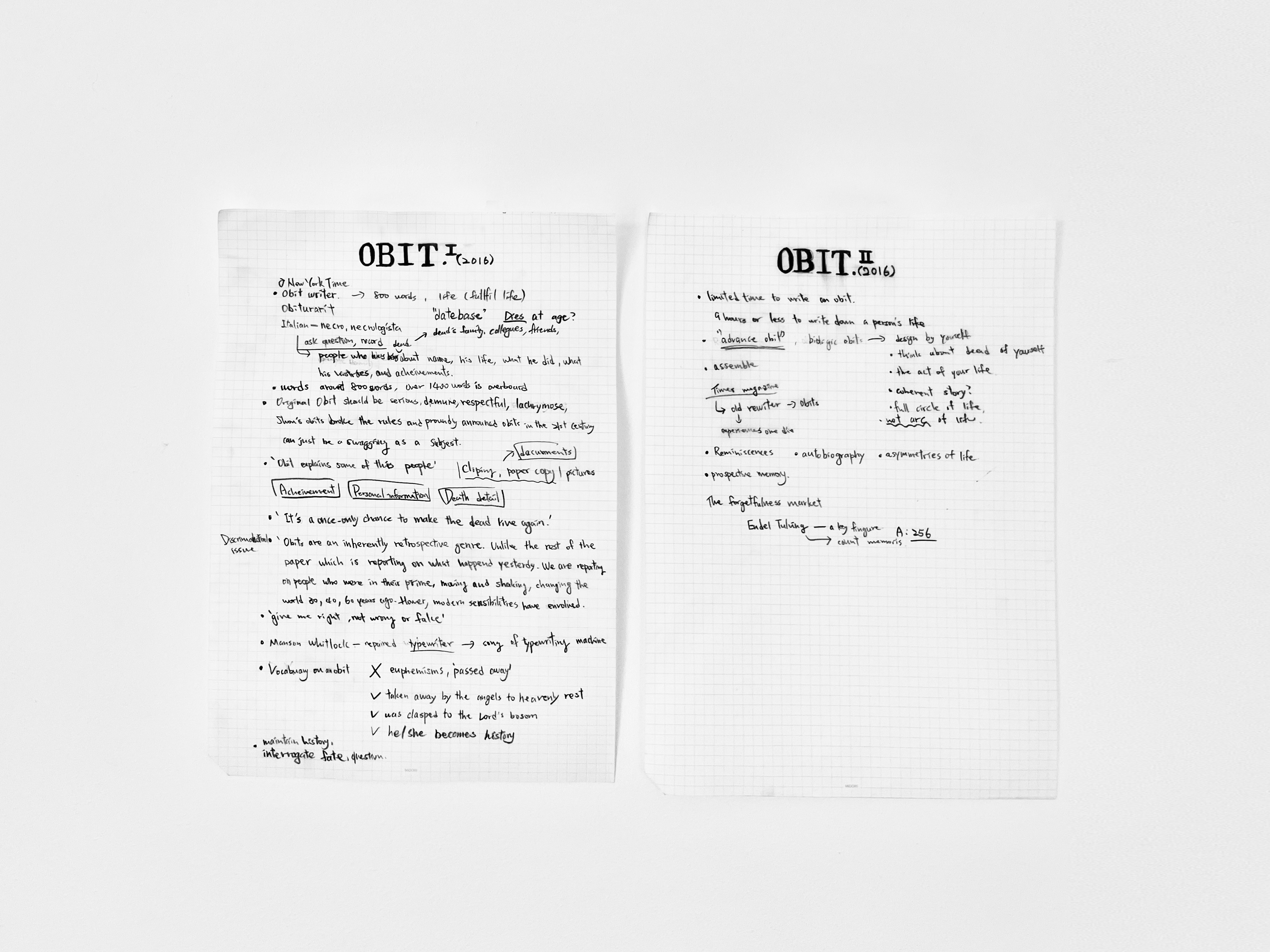
Funerals in Taiwan
The Rituals of Buddhist Funeral
In Taiwan, most people would like to follow the traditional rituals and process of funeral. According to an investigation (2019) from Taiwan Institute of Sociology, there are 49.3% of Taiwan’s population who believe in traditional religions, 14% and 12.4% are Buddhism and Taoism individually. However, 13.2% of Taiwanese are irreligious. Buddhist funerals are the most common ritual in Taiwan. Traditionally, the funerals are held in a monastery or at the family house. During the wake, the members have to do hand-made paper lotuses and stay with the coffin which avoid cats or animals enter the house. In addition, turning on all lights in the house is compulsory during the wake in order to make sure a person’s soul can see their way home and come back. Before placing the body into a coffin, family members have to decide the decoration style of the funeral and the colour of obituary.
The New Trend of Funeral
According to an interview with a funeral director at Forgettable Life Funeral Company, Shu fen Lou thought that in Taiwan, people are used to putting human ashes into funerary urns and placed at the columbarium. However, in recent years, people wish to customise the style of the funeral. For instance, Mixing bones and making it into diamonds, cups or something portable.
Interview with the editor of obituary at The Guardian - Robert White
26:46 - 27:15
We are much more humanist.
38:35 - 39:50
If you want to persuade anybody about anything, you don't tell them what you want, but you give them information and let them decide for themselves. If you give people information and they understand how the person was, what the situation was, they make their own judgment.
3:35 - 3:46
Yes. Secret, we call them stock obituaries like the store the obituary.
27:17 - 31:45
Journalism readability is the key thing.
32:30 - 35:05
But for us, in our lives as well, we make our own story. We have our own story. And we say to each other, this is my story. It's not really a story, but we have to hold our lives together in some way. And you reflect that way in which people hold their lives together.

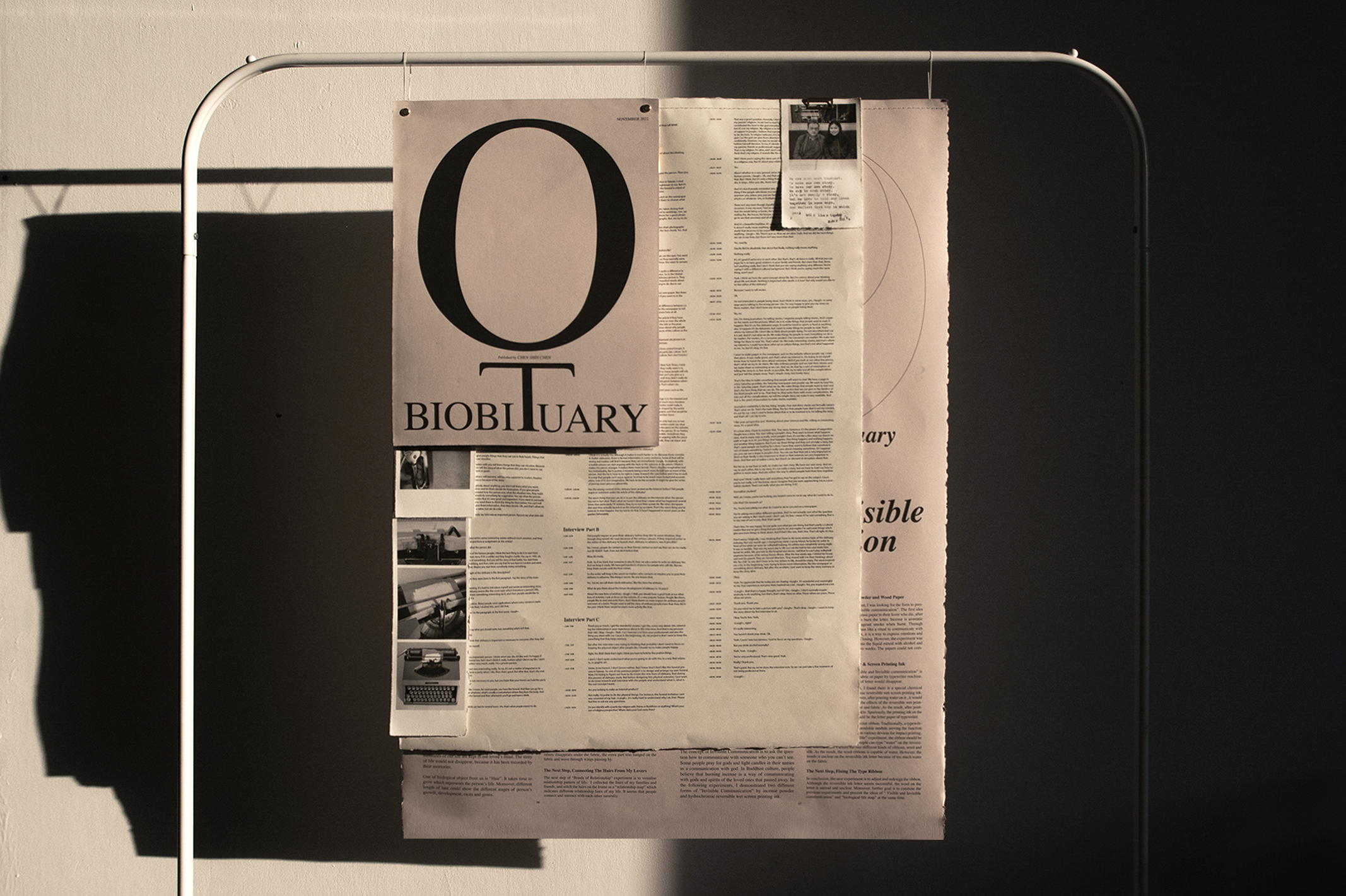
The Final Version Of Obituary publication and Interview conten
Experiments of Biological Obituary
Though the research and interview with the editor of obituary and the funeral director, I found that there are different ways of keeping memories alive. It depends on what people think about their life and their religions. As a Taiwanese, I don’t have a specific religion, although I do pray to Taiwanese gods with my parents. However, I believe in humanism more, “feeling the emotion and believing myself”. Hence, in the following experiments, I aim to create my guide of obituary by myself. One is “Bonds of Relationships”, another is “Invisible Communication”.

Concept A : Bonds of Relationships
As a humanist, feelings and spirituality are important to me, especially for connections and relationship with loved ones. People will die one day, however, after death, unforgettable memories of our life are kept in our loved’s mind. The story of life would not disappear, because it has been recorded by their memories. One biological object of ours is “Hair”. It takes time to grow, representing the person’s life. Moreover, different lengths of hair could show the different stages of person’s growth, development, race and genetics.
Experiment A - Hair invitation Card & Fabric
In the beginning of the experiment, I collected my own hairs that had dropped on the floor in my room and stitched my hair onto invitation cards for my funeral. Interestingly, hair is thin but hard, it can be shaped into different curves and lines. After testing the flexibility of the hair, I attempted to create my funeral portrait consisting of my hairs. As I stitched my hair on the interfacing fabric of the frame, the hairs curved into the shape of my name, Chen Shih Chen, in smooth lines. The next step of the experiment was visualising relationships I had throughout my life. I collected the hairs of my families and friends, and stitched them onto the frame as a “relationship map”, indicating different relationships in my life. This aimed to show that people connect and interact with each other naturally.

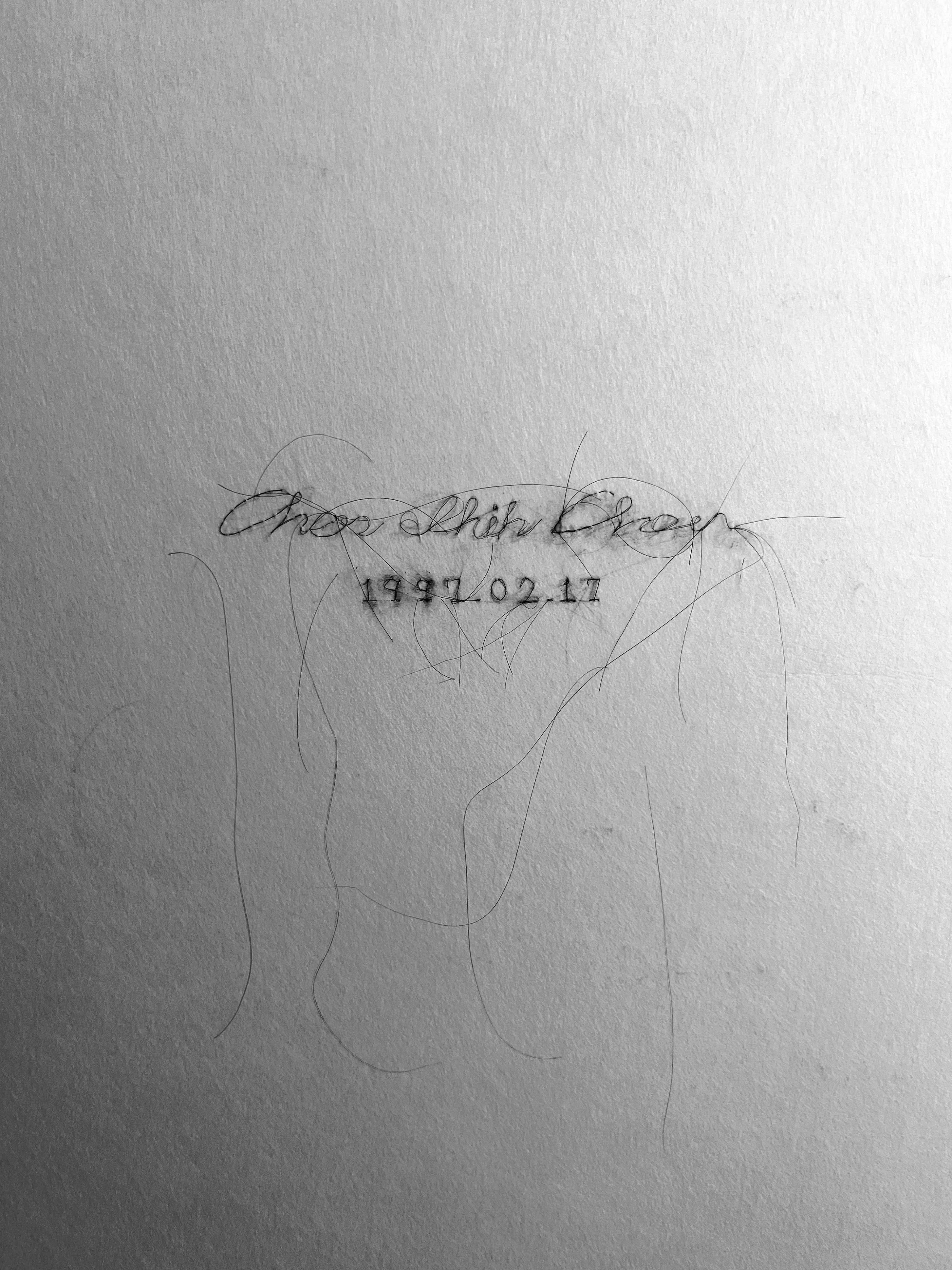
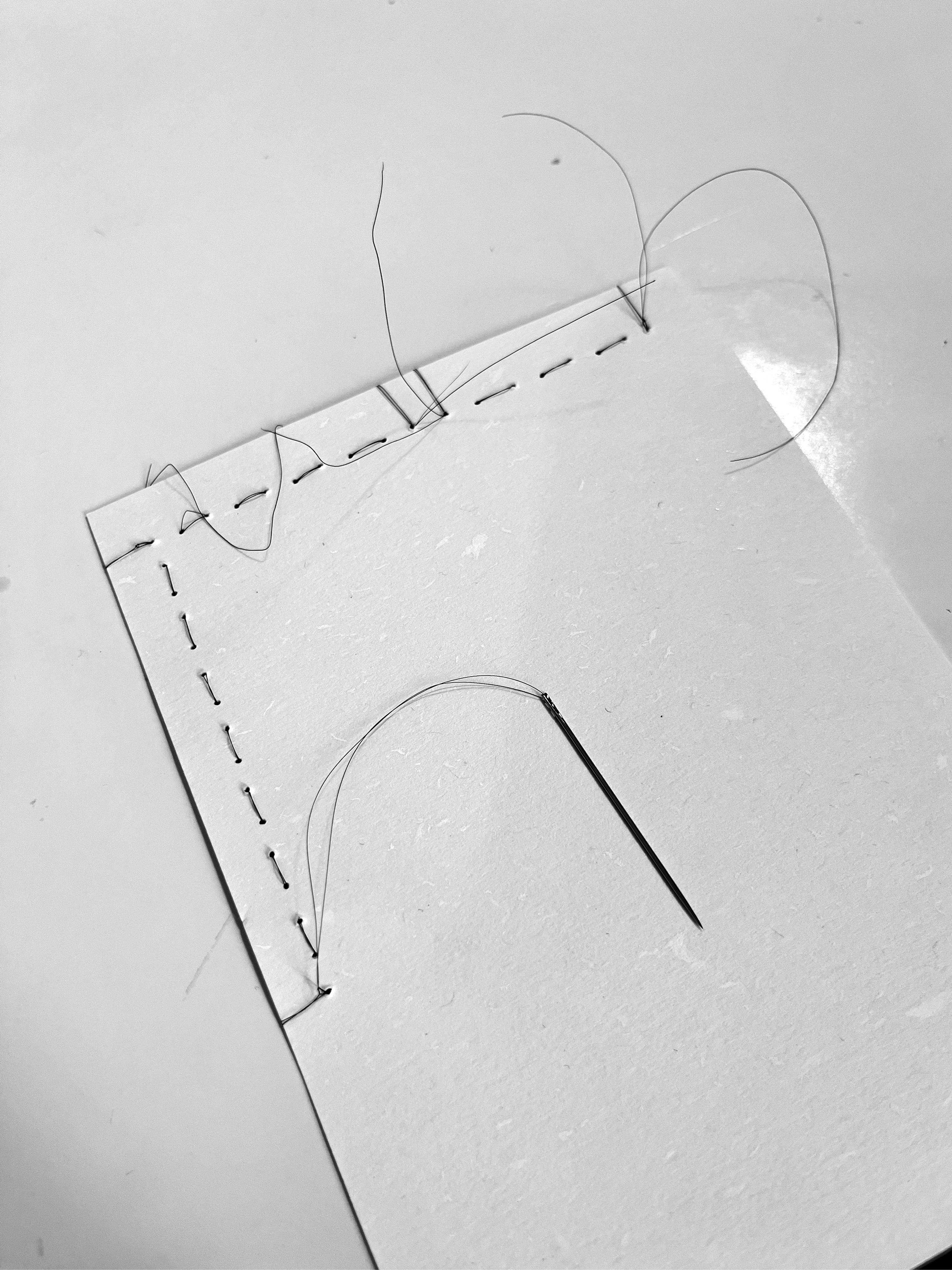


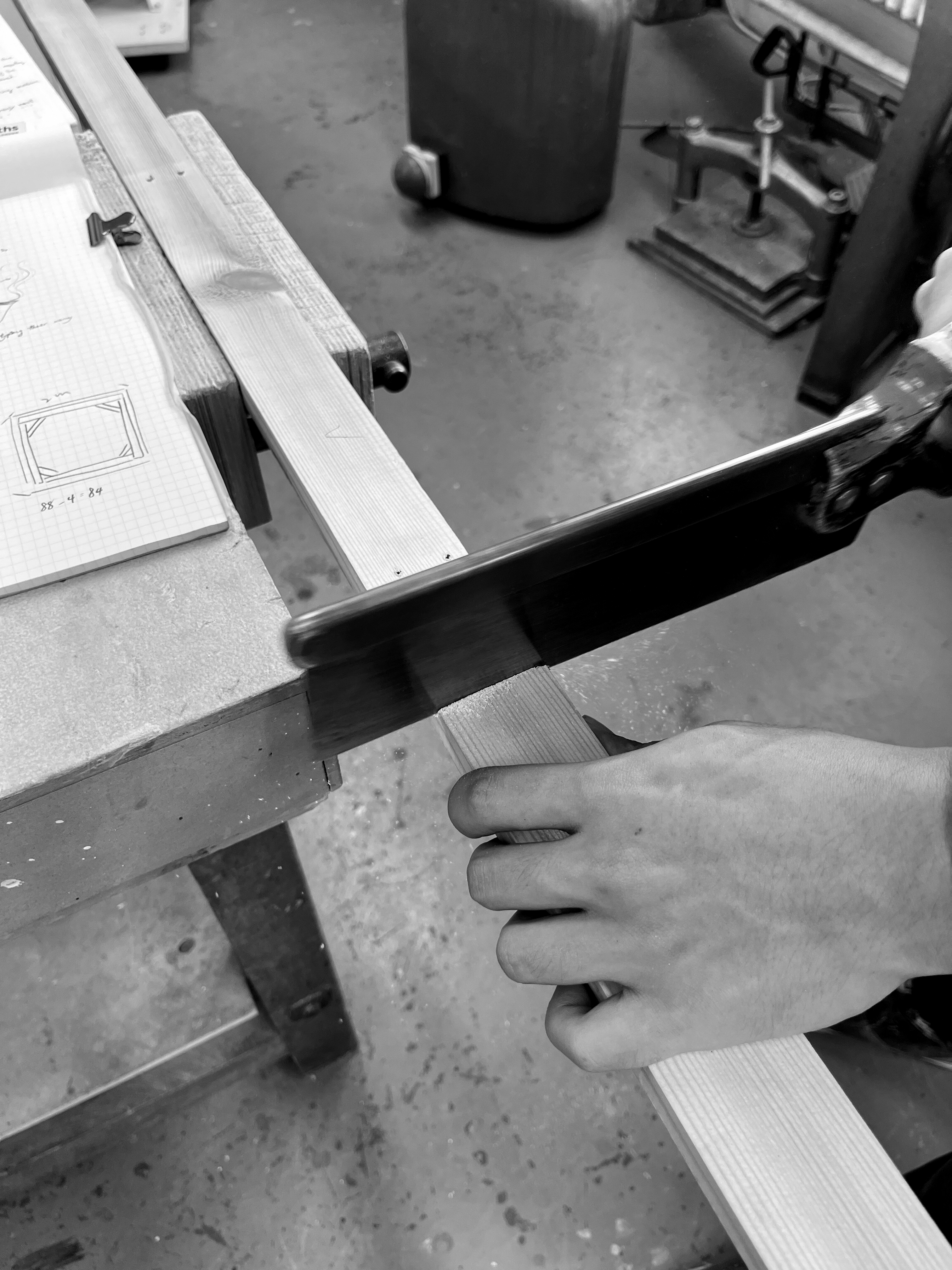
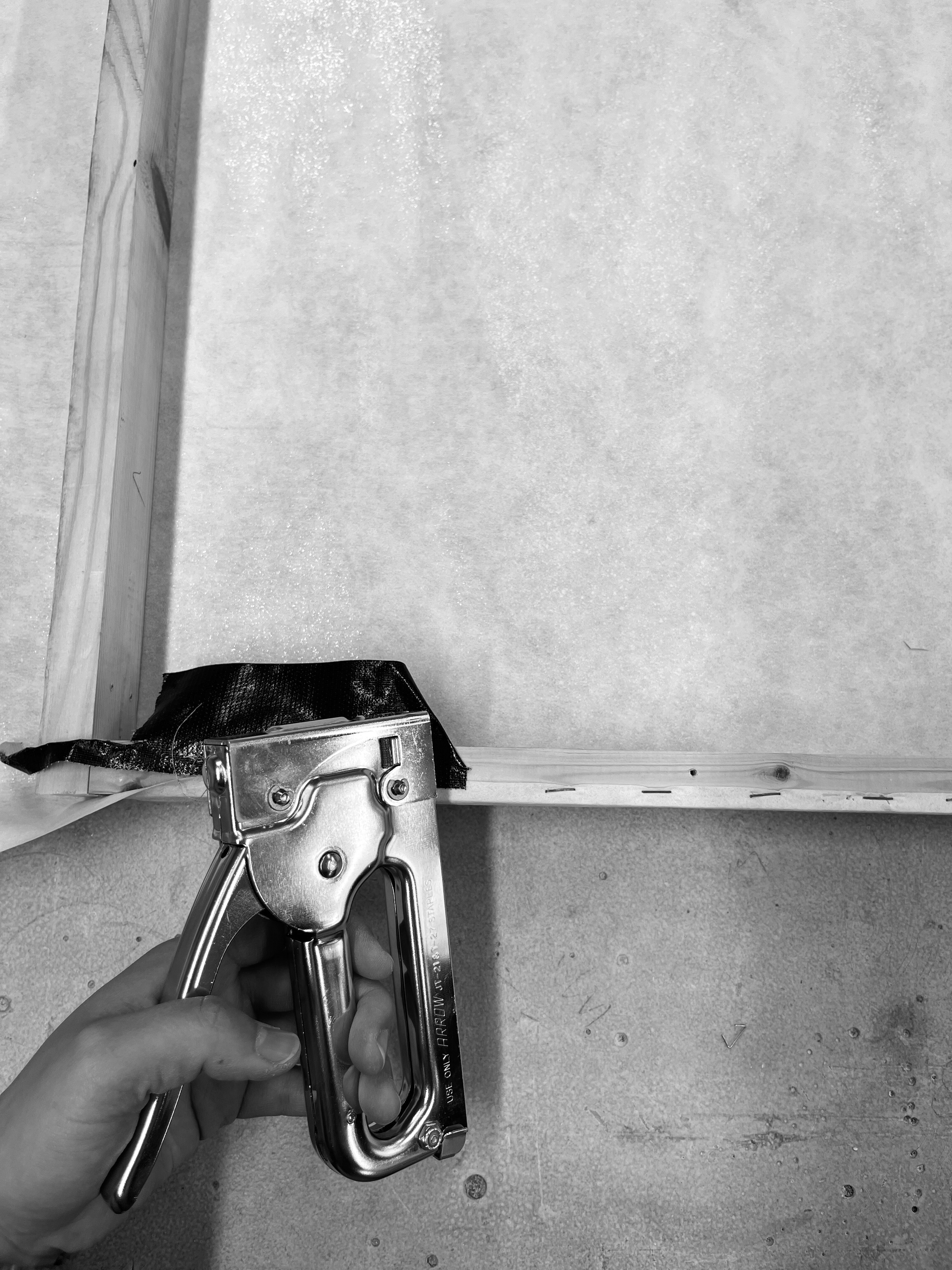
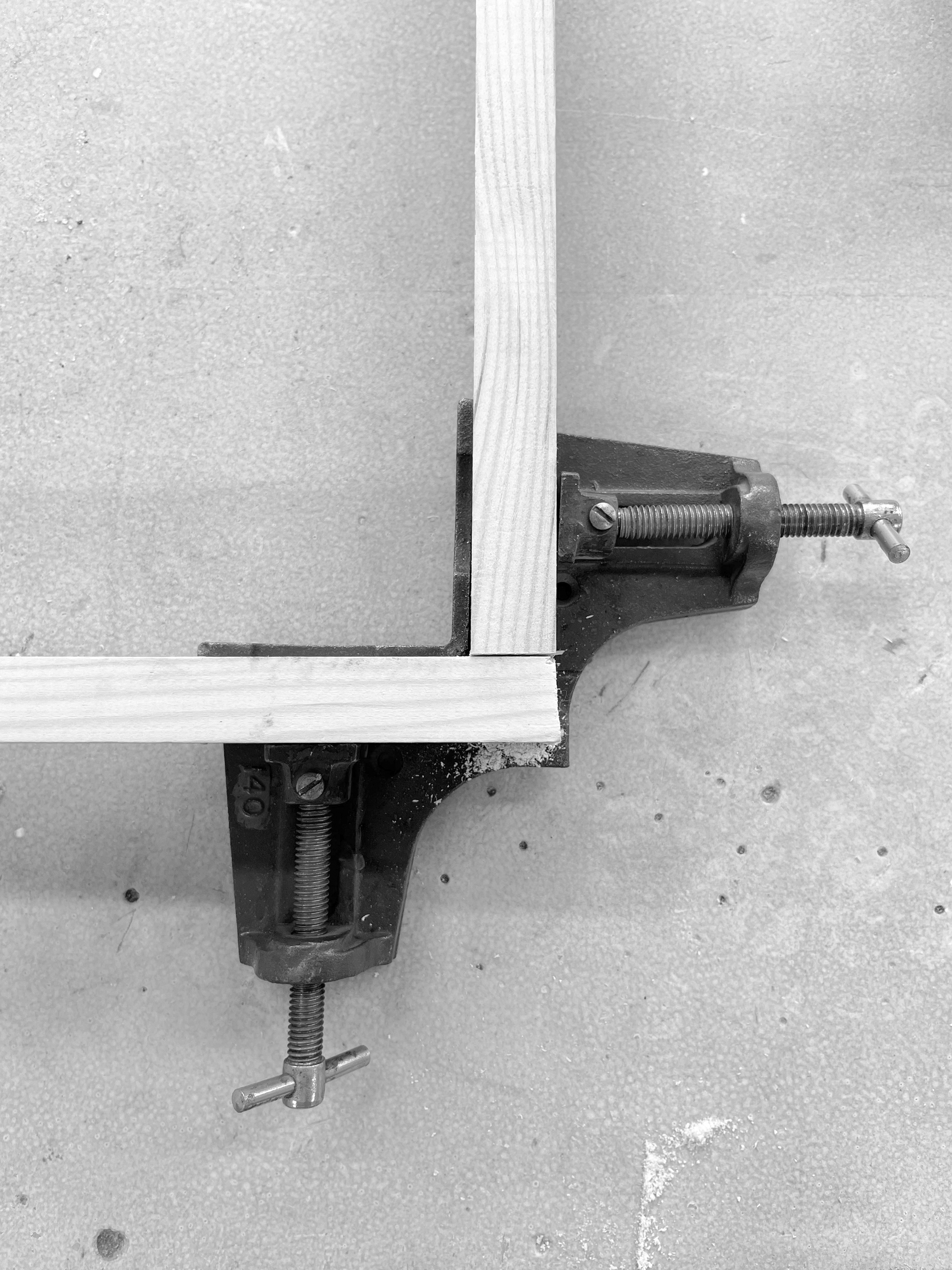
The deisgn process & record of experiment
Concept B : Visible and Invisible Communication
The concept of Invisible Communication is to ask the question of how we can communicate with someone we can’t see. Some people pray to gods and light candles in their names to try and communicate with god. In Buddhist culture, people believe that burning incense is a way of communicating with gods and the spirits of their loved ones. In the following experiments, I demonstrated two different forms of “Invisible Communication” using incense powder and hydrochromic reversible wet screen printing ink.
Experiment B1 - Incense Powder and wood paper
In the beginning of the experiment, I was looking for the form to present the idea of “Visible and Invisible communication”. The first idea I had was to write a letter on incense paper to a lover who had died and after, burn the letter. Incense is an aromatic biotic material that releases fragrant smoke when burnt. Through burning the incense letter, they engaged in a ritual to communicate with their lovers who had died. At the same time, it was a way to express and release emotions during the experience of grieving. However, the experiment was unsuccessful. I put the papers into the liquid mixed with alcohol and incense powder, and left it for two weeks but the papers could not completely mix with the incense.
Experiment B2 - typewriter & hydrochromic reversible wet screen printing ink
The second idea to present “Visible and Invisible communication” was to type a letter on special fabric or paper using a typewriter machine. After a few minutes, the contents of the letter would disappear.
The first step of the experiment, I found that there is a special chemical which is like reversible ink, called hydrochromic reversible wet screen printing ink. Initially, the ink is white, but when water is poured on it, it turns transparent. I tested the effects of the reversible wet printing ink on different kinds of paper and fabric. After printing, the paper wrinkled but the printing ink on the wood fabric turned flat and soft. Although the reversible ink letter seems to be successful, the words in letter are unclear. Another experiment to make words clear is to tie wool line and hairs up to the iron rod on the typewriter, and put the top and end of wool line in to glasses. After typing and debossing words on the fabric, the inks on the surface of fabric records the shape of the words. When the fabric passed through the wet wool line on the iron rod, water leaves into the debossed words and indicates words clearly. After few minutes, the contents of the letter would disappear gradually through the drying process of the inks on the fabric. As final outcomes of experiments, it is like a private funeral to invite families and friends to have a last drink in the end of lives.

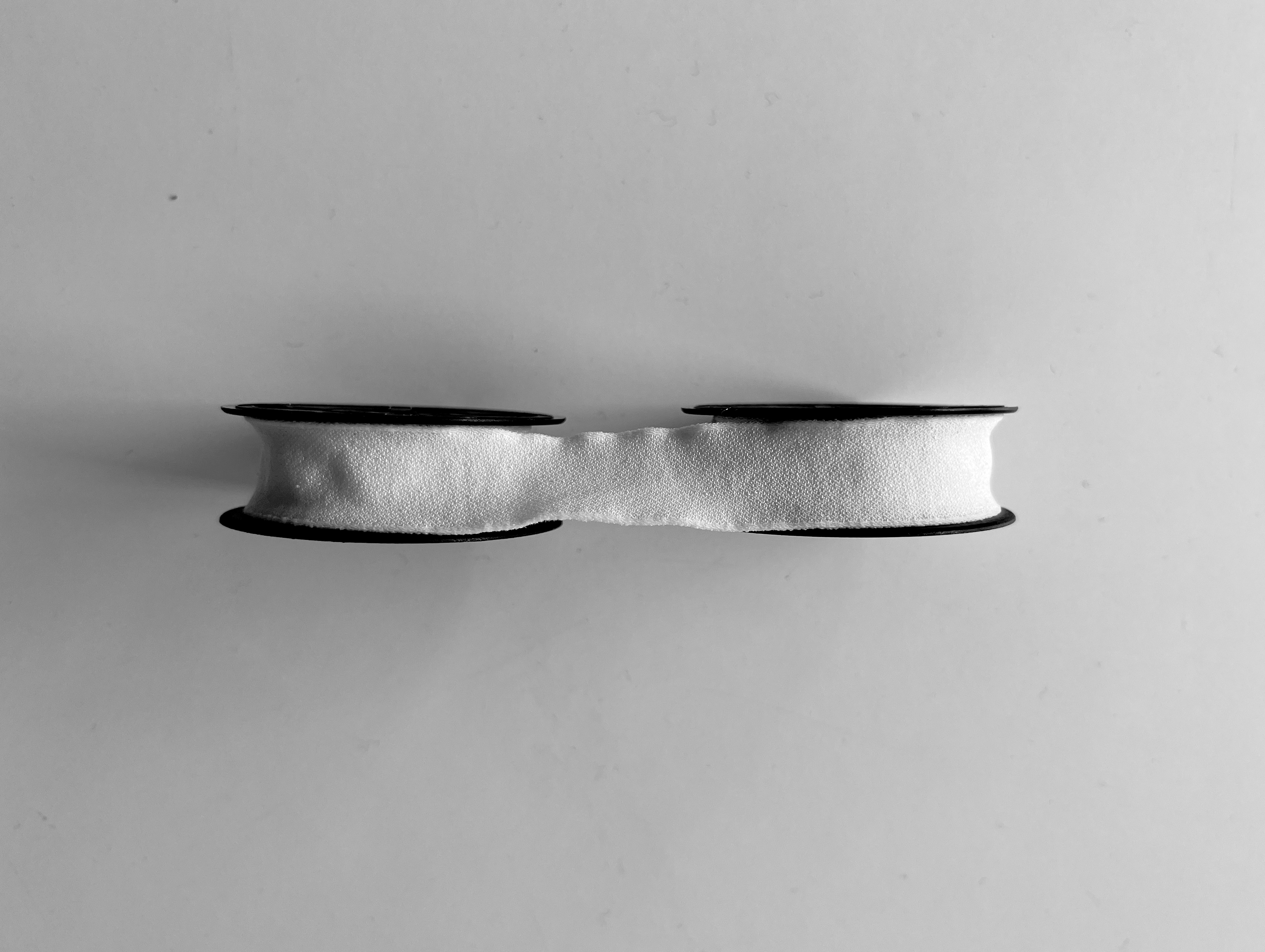

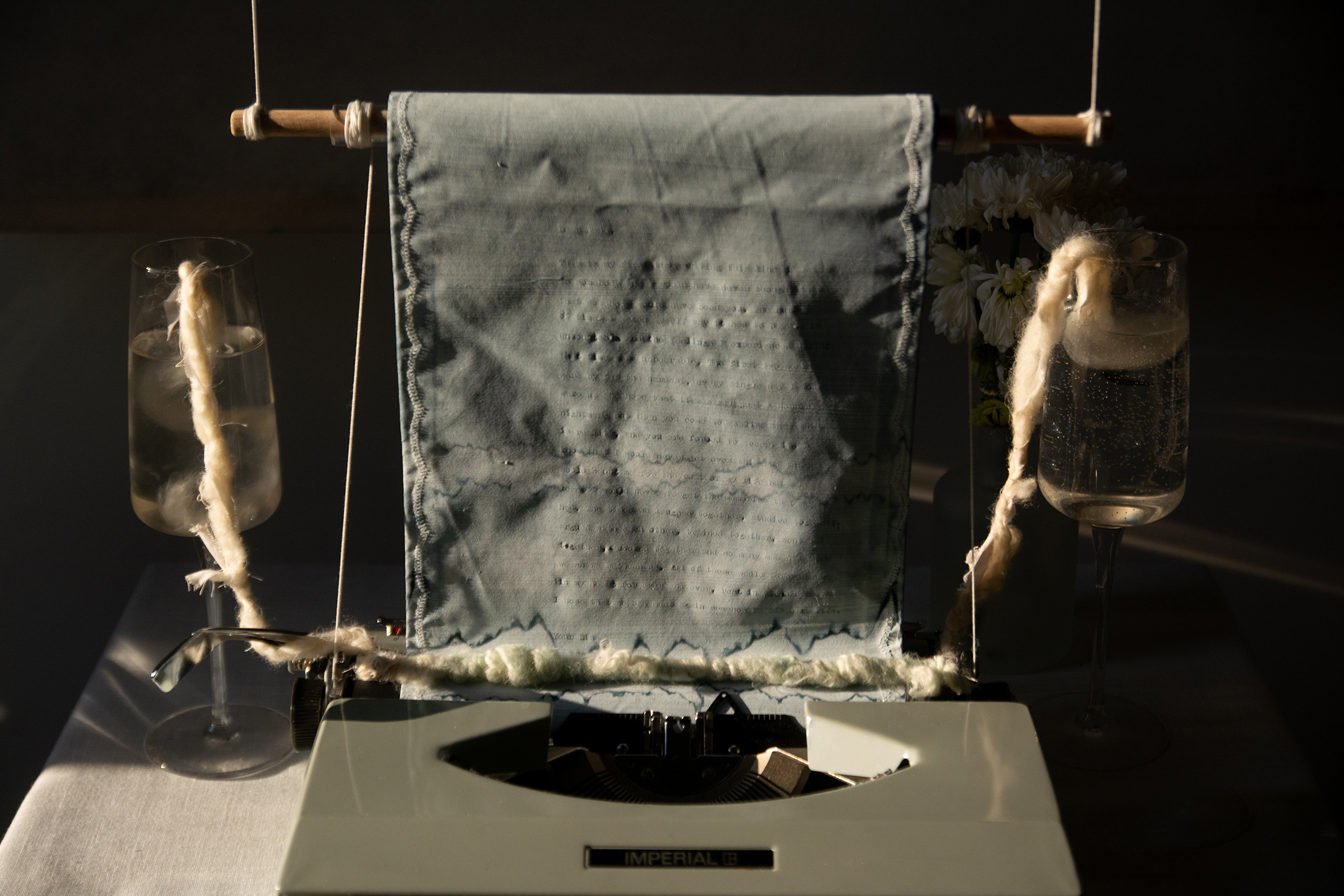


Credit List
Producer | Shih-Chen, Chen
Visual designer | Shih-Chen, Chen
Adviser | Annelore Schneide, Jimmy Loizeau
Special thanks | Dmitrii Yurievich Sizikov, Freya Raja
Visual designer | Shih-Chen, Chen
Adviser | Annelore Schneide, Jimmy Loizeau
Special thanks | Dmitrii Yurievich Sizikov, Freya Raja